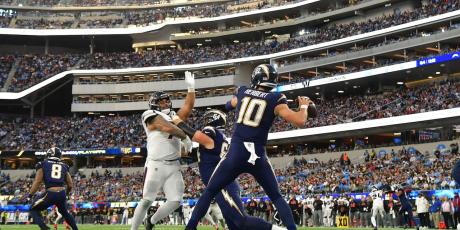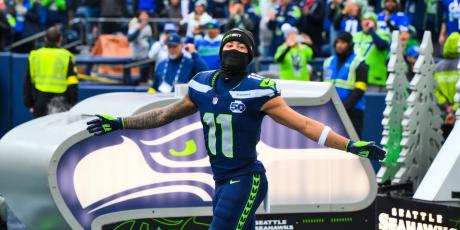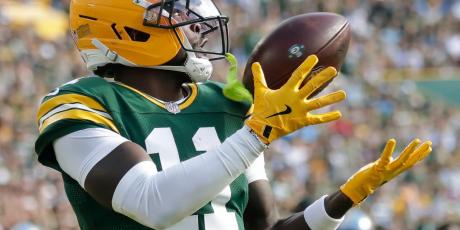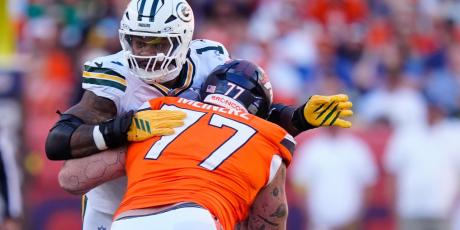How Draft Date Impacts Best-Ball Leagues
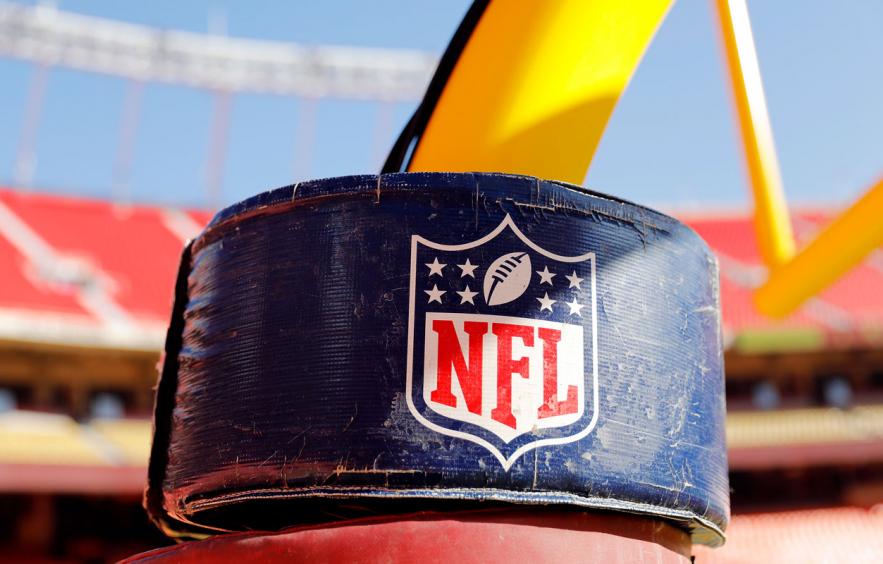
Patience is bitter, but it does bear sweet fruit.
As we gather more knowledge of projected usage, rookie landing spots and scheme changes throughout the preseason, our patience is rewarded with sharper draft picks and higher team point totals. This is, of course, especially true in best-ball drafts, where our fate is sealed the moment we click “Draft Player” in the final round. With no in-season moves, our knowledge of each player’s situation is constantly tested with each pick, which is one of many reasons why winning scores fluctuate widely depending on when your draft is taking place.
Below, I’m going to dig into exactly how much winning scores change from February through the end of August, and some of the factors we can attempt to avoid to circumvent the pitfalls.
Winning Scores and Immediate Takeaways
 The above graph represents the points scored by the QB, RB, WR, and TE by the winning teams, with each point representing the average winning score of the last 30 drafts up to that point. This data is from FFPC best ball drafts in 2019, so you may be wondering; where are the points scored from kickers and D/ST? Well, since FFPC is the only site (to my knowledge) still offering a placekicker slot and it’s quite impossible to select a fantasy team defense that will score you zero points, I decided we would stick to the core of our teams, and discuss how draft date can affect them.
The above graph represents the points scored by the QB, RB, WR, and TE by the winning teams, with each point representing the average winning score of the last 30 drafts up to that point. This data is from FFPC best ball drafts in 2019, so you may be wondering; where are the points scored from kickers and D/ST? Well, since FFPC is the only site (to my knowledge) still offering a placekicker slot and it’s quite impossible to select a fantasy team defense that will score you zero points, I decided we would stick to the core of our teams, and discuss how draft date can affect them.
By the peaks and valleys of the winning scores, I’ve identified four separate buckets of draft dates we can dig deeper into; early offseason, pre-draft, post-draft and preseason.
Early Offseason
Average Winning Score: 3,225/201.5 points per week
Clearly, the lowest-scoring best-ball teams are going to be the ones drafted immediately after the Super Bowl, during the “dead zone” between the Lombardi Trophy and the middle of March when teams are allowed to designate franchise players and begin talking to unrestricted free agents.
There are reasons to believe that player ADP is the softest in these months, but it’s hard to map a full picture of what teams are going to be doing for the upcoming season so early. The best way to attack these months is to play a little more conservatively than you otherwise would. To insulate yourself from risk, you may stick more vehemently to roster construction than you would when you need to zig while the field zags in July-August drafts.
According to Chris Allen’s study on 2019 FFPC roster construction, the two most popular winning roster constructions had the following builds; three QBs, four TEs, three D/STs and three PKs. The third and fourth most popular builds were exactly the same, except with three TEs instead of four. (Keep in mind FFPC has 28 roster spots as opposed to the typical 20) The point being, if you can mirror those roster constructions and cushion yourself by going heavy on the “onesie” positions, you’re giving yourself a better chance to buoy the floor of your team.
Roster construction is important to all best ball drafts, but it could very well be the most important when there is the highest number of unknown variables.
Pre-Draft
Average Winning Score: 3,245/202.8 points per week
This is the world we’re living in at the time of this writing, and it’s not pretty. I blame it all on the incoming rookie class. Not necessarily the 2020 rookie class, just any rookie class. After a brief escalation in winning point totals through the late-winter/early-spring weeks, we see a sharp downturn immediately before the NFL Draft. It’s not the rookies’ fault per se. It’s our fault for getting so infatuated with players before they’re selected to an honest to goodness professional football team.
Below are the 2020 rookie ADP differences from late February to Late March for QB, RB and WR (there isn’t much love for rookie tight ends this year).
| Player | Position | Late-February ADP | Late-March ADP | Pick Difference |
|---|---|---|---|---|
| Joe Burrow | QB | 11.12 | 11.10 | 2 |
| Tua Tagovailoa | QB | 20.01 | 18.11 | 14 |
| Jonathan Taylor | RB | 5.04 | 3.03 | 25 |
| D'Andre Swift | RB | 4.08 | 3.08 | 12 |
| J.K. Dobbins | RB | 5.07 | 4.07 | 12 |
| Cam Akers | RB | 8.06 | 6.05 | 25 |
| Clyde Edwards-Helaire | RB | 10.09 | 7.03 | 42 |
| Jerry Jeudy | WR | 10.02 | 8.11 | 15 |
| CeeDee Lamb | WR | 10.06 | 9.08 | 10 |
| Henry Ruggs III | WR | 14.06 | 12.10 | 20 |
| Justin Jefferson | WR | 21.11 | 17.01 | 58 |
You’re not reading that wrong, one hundred percent of the top rookies from this class have rising ADPs, and they’re unlikely to stop that upward trajectory until the NFL Draft. Some are more extreme than others, with Joe Burrow a sure Cincinnati Bengal and Justin Jefferson having a much better-than-expected combine, but the hype is growing for them all. Rookies are vaulting over veterans who have already made a mark on the league and our fantasy teams despite the fact that the former has never seen an NFL snap.
If you’re going to fall into the trap of the shiny new toy, make sure you are pairing these rookies with veterans who will ease the pain of under-achieving first-year players through the first half of the season. Rookies tend to score anywhere between 11% - 31% more fantasy points in the second half of the season, so you need to have guaranteed points to lessen that blow. For a deeper dive on how to manage rookies in best-ball drafts, give this a read.
Post-Draft
Average Winning Score: 3,420/213.8 points per week
Now we’re starting to cook with fire. Our upward ascent in winning scores waivers, but never falters from here on out. With initial 90-man rosters mostly set, rookie minicamps underway, and most major contracts decided, the fantasy community can begin making constellations out of the myriad of seemingly random data points.
This is the most important time to stay up to date on player news, and as you begin to ramp up your best-ball portfolio, I would suggest keeping 4for4’s Player News tab open for easy access while making picks. Things change quickly with injuries, holdouts and rookie inclusion (or omission) from first-team reps. While on the clock —especially in the early rounds— take your time and make sure nothing immediate is impacting the players upcoming in your queue.
As the average draft position begins to tighten up through Summer, it’s good process to find guys who are falling well below their typical draft price, even if it’s not someone you've been attempting to get maximum exposure to. Value-based drafting becomes even more important as the winning score needed gradually increases.
Preseason
Average Winning Score: 3,612/225.8 points per week
Clocking in at over 3,600 points, the total team points needed to win a best-ball league has climbed nearly 24 points per week since February, and your team now needs to score an average of 225 points per week according to data from 2019.

You can see from this graph of average scores throughout the year, August is when the brightest minds really start pulling away from the pack. The average score doesn’t deviate more than ~ 150 points through the offseason and actually begins to oscillate back down to the earliest dates of the year. The weeks leading up to kickoff is when we see an influx of people with less knowledge about the game start to throw money into the drafts, likely the root cause of the lowering average score.
With the most knowledge possible at our disposal, this is the time of year you want to be entering teams into large-field tournaments, like the DRAFT Best Ball Championship in 2019, and any similar contests that arise in 2020. Being able to navigate the minefields of injuries and starting job forfeitures that come in the early Summer months is a massive advantage that you will have over those who drafted these mega-entry leagues earlier in the year.
As we have seen in the “Early Offseason” section, loading up on onesie positions is a great way to protect ourselves through the injuries and uncertainty of Summer, but now that we’re right up against the season, we are as well informed as we ever will be. This is the time to aim for the sky, and that might mean loosening our grip on conservatism to aim for more high-upside skill players.
Non-traditional or antifragile roster construction should be something you consider with the knowledge that you’re going to need to average 225 points per week for 16 weeks to take down a traditional 12-team league, let alone a best-ball tournament. Betting on yourself to hit late-round darlings like last year’s DeVante Parker or Deebo Samuel in every draft isn’t going to be enough. (Take a look at 2019 WR win rates here and RB win rates here).
Instead, two QB/two D/ST lineups sneak their way into consideration, as long as you are keeping a close eye on bye weeks. Taking two elite-level tight ends is viable in any league where you're looking to get a leg up, and even more so on FFPC, with it's TE premium scoring.
The Bottom Line
While there may be no better advantage than being fastidious about player news, there are many ever-changing variables to being successful in best-ball leagues, regardless of the calendar. Since it’s impossible to have a perfect record with a large portfolio —sometimes it’s difficult to consistently beat the eight percent expected win rate and rake— we need to be focused on different aspects of drafting as the year moves along:
- Early Offseason - pay very close attention to roster construction to eliminate the inherent risk that the early months present
- Pre-Draft - don’t get completely washed up by rookie hype, and when you do take the bait on skill position players make sure you’re pairing them up with veterans at the position
- Post-Draft - be vigilant in checking for player news. Values can open up literally as you’re on the clock
- Preseason - don’t be afraid to take risks. The fantasy community as a whole is as in tune with the NFL as possible, and you need to find a way to differentiate from the pack, whether that means unbridled roster construction or taking stabs on players you believe can far outkick their ADP.







